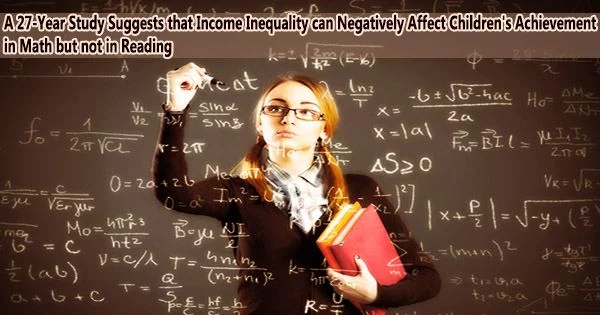The most extensive study of its kind has discovered that income inequality has an impact on children’s math performance but not on reading.
The investigation, which was published in the journal Educational Review, examined data spanning the years 1992 to 2019 and found that 10-year-olds in US states with greater economic inequalities performed worse in math than children living in regions of America where salaries were more evenly distributed.
Given that wealth disparity in the US is the largest among developed nations, researcher Professor Joseph Workman contends that resolving social inequality may have a more positive impact on academic success than policymakers’ preferred ways of changing schools or curricula.
A number of health and social difficulties, including mental health conditions, a lack of trust, greater rates of incarceration, and lower rates of social mobility, have long been linked to income inequality, a measure of how unevenly income is distributed within a community.
It may also affect academic achievement, through various routes.
For instance, there is a correlation between wealth inequality and greater rates of divorce, substance misuse, and child abuse, all of which can have a negative impact on a kid’s development. Additionally, it is linked to a higher likelihood of low birth weight babies, which increases the likelihood that they may experience developmental delays as they grow older.
It may be more challenging for some schools to address the needs of each kid if there is a high concentration of students from underprivileged families as a result of income inequality.
Professor Workman, a sociologist at the University of Missouri, Kansas City, compared almost three decades of fourth graders’ maths and reading results from the National Assessment of Educational Progress (NAEP) with data on income inequality from all 50 states.
Also known as the Nation’s Report Card, the NAEP measures student achievement nationally, using a representative sample of youngsters from each state.
For maths, income inequality was associated with lower achievement for both poor and non-poor students alike. But for reading, income inequality benefited non-poor students and harmed poor students. So, for reading the benefits and harms cancel out to no association overall.
Professor Joseph Workman
Income inequality in the US has followed a U-shaped pattern over the past century. Prior to dropping off between the 1940s and 1970s and then rising again, levels peaked in the 1910s to 1930s. The income disparity in the developed world is at its widest point right now.
The investigation revealed that states with larger levels of income disparity had on average lower math test scores.
It also showed that kids from all socioeconomic backgrounds experienced decreased success levels as a result of income inequality, not simply the poorer students.
The results could not be accounted for just by the fact that social problems and educational concerns were more prevalent in disadvantaged communities. Instead, it appeared that lower academic success was being caused by the economic disparity among the top earners.
Further investigation revealed that the states with the largest increases in income disparity over time also had the smallest increases in math achievement.
Scores in these states rose by an average of 17.5 points compared to an increase of 24.3 points in states in which the income divide didn’t widen as quickly.
Reading grades were, however, not linked to income inequality overall.
Professor Workman explains: “For maths, income inequality was associated with lower achievement for both poor and non-poor students alike. But for reading, income inequality benefited non-poor students and harmed poor students. So, for reading the benefits and harms cancel out to no association overall.”
With preliminary evidence suggesting the same patterns apply to other age groups, Professor Workman believes his findings have important implications for policymakers.
He says: “Assessments of the No Child Left Behind Act, which attempted to raise achievement and reduce achievement disparity by reforming schools, have provided scant evidence of the policy being effective in achieving its goals.”
“An effective strategy to raise achievement may be to reduce income inequality. Policies such as progressive tax rates, wealth tax, inheritance tax and annual wealth tax can effectively reduce inequality.”
“Higher tax revenues could be used on programmes that support child development, such as universal pre-kindergarten or summer learning programmes.”
It isn’t known, however, if a similar pattern exists in other developed nations with high levels of income inequality, such as the UK.
Professor Workman concludes that while it has been argued that income inequality provides motivation for success, rates in the US have “perhaps reached levels that are dysfunctional for society.”
















